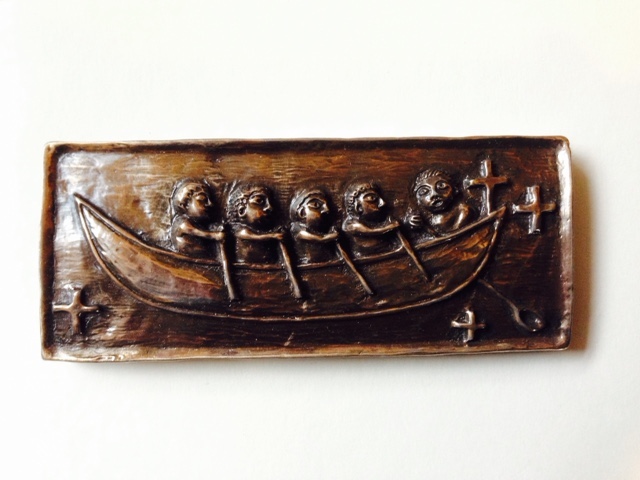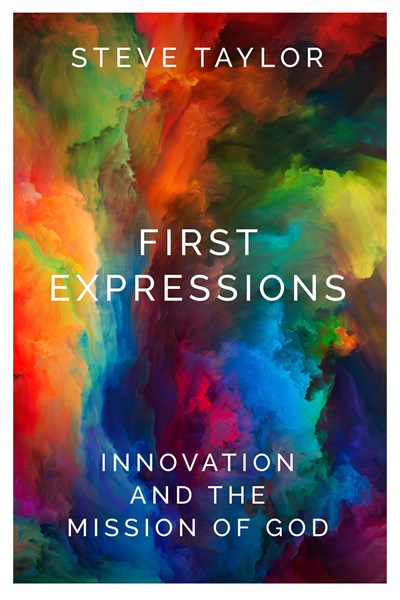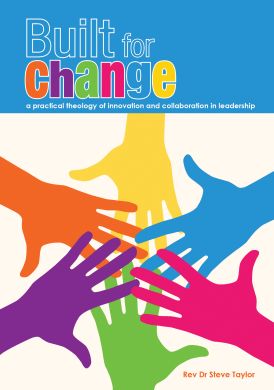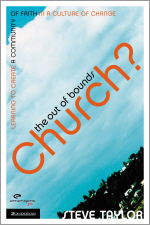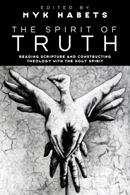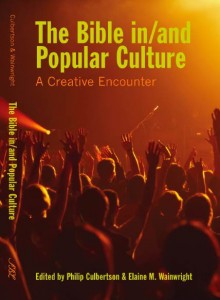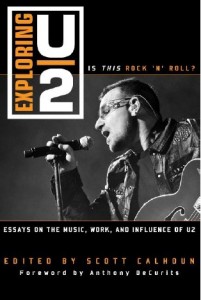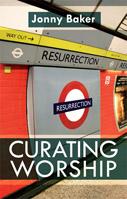Tuesday, April 05, 2011
creationary: In search of a round table
A creationary: a space to be creative with the lectionary. For more resources go here.
A few weeks ago I posted a communion reflection, on how the roundness of a communion table remakes us – a reflection of the physicality of the table, the importance of space and the power of the gospel to change relationships, powers and hierarchies.
Maggi Dawn has just posted a poem in a very similar vein.
In search of a round table
a poem by Charles Lathrop
Concerning the why and how and what and who of ministry,
One image keeps surfacing: A table that is round.
It will take some sawing
To be roundtabled.
Some redefining
And redesigning,
Some redoing and rebirthing
Of narrow long Churching
Can painful be
For people and tables.
It would mean no daising
And throning,
For but one king is there
And he is a foot washer,
At table no less.
And what of narrow long ministers
When they confront
A round table people,
After years of working up the table
To finally sit at its head,
Only to discover
That the table has been turned round?
They must be loved into roundness,
For God has called a People
Not “them and us”.
“them and us” are unable
to gather round; for at a round table
there are no sides
and ALL are invited
to wholeness and to food.
At one time
Our narrowing churches
Were built to resemble the Cross
But it does no good
For building to do so,
If lives do not.
Round tabling means
No preferred seating,
No first and last,
No better, and no corners
For the “least of these”.
Roundtableing means
Being with,
A part of,
Together and one.
It means room for the Spirit
And gifts
And disturbing profound peace for all.
We can no longer prepare for the past.
We will and must and are called
To be Church,
And if He calls for other than a round table
We are bound to follow.
Leaving the sawdust
And chips, designs and redesigns
Behind, in search of and in presence of
The Kingdom
That is His and not ours.
Monday, April 04, 2011
can mission be embedded into the worship DNA? a worship treat
Scattered and gathered, outward and inward, sending and receiving, mission and worship – I have been pondering the relationships for the last few weeks.
- I had a general introduction – can mission be embedded into the worship DNA – here.
- I had a followup – a possible worship pattern – here.
Today in chapel we trialled a very practical beginning. We began outdoors (scattered). We invited people to use their outside environment as the starting point for reflection. For 10 minutes, to wander. And in particular to consider
- bitumen – what has been hard?
- sky – where have we found joy?
- windows – who, what, have we walked past?
- grass – what of God’s breath in creation have we missed?
We gave out a card as an aid (very simple, used an apple Pages business template and just rolled text and picture in).
And then we gathered to continue in worship – to hear Scripture, to have communion, to pray for God’s world, before being benedicted back into the places of bitumen, sky, windows and grass.
I loved seeing people wander, reflecting on God in our scatteredness and then having that woven into our gathering. So there you are, some thinking about mission and worship, a possible worship pattern and now here, a practical worship treat that might encourage and inspire you to do better.
Do let me know how you improve it 🙂
Wednesday, March 23, 2011
can mission be embedded into the worship DNA? a 2nd proposal
This is a further post on the topic: can mission be embedded into the worship DNA? a proposal.
In an ideal world, worship moves as a spiral between gathered and scattered, scattered and gathered.
I imagine two circles. Some worship I experience is simply gathered – you go round and round in a circle with no evidence that life outside Sunday, outside the church building exists. Some worship I experience as simply scattered – the call to live in the world, as individual salt and light, with no connection to the people of God gathered. What I suggest is that the two circles – gathered and scattered – overlap, with a continuous flow.
Whether you start with gathered, and then are sent into the world to be the hands and feet of Jesus, or whether you find yourself the hands and feet of Jesus and return to share those stories with the community of God, the hope is a rhythm in which the people of God gather to scatter, scatter to gather.
In my first proposal I sketched a way that over time, over a month, a community might structure itself to embody this flow between gathered and scattered.
In this second proposal, I suggest a way this could happen weekly. This is based on deciding that the places we are salt and light are the primary places in which we are Christian. In other words, to be Christian is to be scattered.
Then, when we gather, we want the stories of us being in scattered in mission, of us being the hands and feet of Jesus, to shape our gathered worship.
The suggestion is that we use the standard pattern of worship
- Call to worship
- Thanksgiving
- Confession
- Word – hearing
- Word – engaging
- Communion
- Prayers for the world
- Benediction
and invite the focus to be on the community sharing stories that are arising from our scatteredness. In other words – what have we seen that makes us thankful? what have we experienced that sends us to confession? what in our scattered context makes the Word alive among us? what from the newspapers is causing us to pray?
When people gather, worship moves through this regular pattern. People simply share the stories. This could be impromptu, or it could be decided prior, or it could be a mix of both. Some sort of shared words could be used to nest individual stories in the work of the worshipping community. For example, after each thanks story is shared, then everyone together says – Thanks be to God. Or words from the Lectionary Psalm are read together after stories for confession have been shared.
It will probably mean less of a need for a worship leader as song leader (although songs could still be sung) and more of a need for worship leader as curator – a person to welcome, enact the call to worship, offer the benedict, who make sure enviroment works, and to link, where necessary between the segments. (Mark Pierson’s The Art of Curating Worship: Reshaping the Role of Worship Leader has more on worship leader as curator.)
This second proposal is using the established gathered worship liturgy of the church, but is making the focus of gathered worship the stories from the scattered lives-in-mission. It is refusing to let worship be about gathering, nor letting scattering have no communal resourcing. Rather it is “lightening” existing gathered worship by orientating it around the stories of the people of God in life.
Sunday, March 20, 2011
can mission be embedded into the worship DNA? a proposal
Updated: For a second proposal, see can mission be embedded into the worship DNA? a 2nd proposal.
Updated: to be clear, I’d not for a moment suggesting this for a whole existing congregation. Best way to kill an idea is to expect everyone to agree! With this, I’m wanting to suggest an experiment, to invite a number of folk to try for a set period of time and then to sit back and reflect on the implications.
Here is the logic of some current thinking.
1. Faith is caught, not taught. Thus the Christianity we are offering is focused on worship, not on mission. The energy for being Christian today (what folk see, what people are paid for) is concentrated on the invitation to gather and to worship, not to scatter in God’s sending name.
2. This makes mission the extra, the stuff we do after the benediction and outside the worship service.
3. Mission is a multi-faceted way of being God’s hand and feet in the world. It includes the individual relationships we have with those beyond the community of faith. It also must include corporate acts in which the people of God together are the body of Christ.
4. We live in a time poor society. This means that some prioritisation must happen. Current Western church attendance patterns include more and more folk attending fortnightly. In other words, weekly is hard enough, let alone saying to folk – to be part of us weekly involves both gathered worship and mission.
5. Churches when they gather do some mission. This involves pray for others. It also involves giving financially. However if we are honest, most of this giving is funneled into more worship, not into mission.
6. Further, it takes levels of skills I rarely see to integrate mission into all of gathered worship – thanks, hearing the Word, confession, communion. The Uniting church worship recommends the worship includes a Word of Mission, but one is more likely to see a Kiwi than find this wonderful treasure.
So how can we embed mission into the DNA of the worshipping life of the church? Since this blog has many purposes, one of which includes trying out ideas, flying kites, here’s a suggestion, that we offer the following pattern for church.
Week one – gather together to give thanks, name sin, engage the Jesus story, hold the world before God ie gathered worship.
Week two – scatter – each is encouraged in this week to simply connect with friends and family who are not yet Christian, to pursue individual redemptive relationships.
Week three – gather – a simple gathered worship service focused around communion, storytelling of the Jesus story and prayer for relationships.
Week four – gather but only in order to do a combined mission project. People come together to plant trees, feed the homeless, advocate for justice, plan community events.
In this pattern, all the important facets of gathered worship are present, albiet monthly, rather than weekly. What is changed is that mission – both individual and corporate – is now embedded into the rhythm of the gathered communion.
I would have resisted such a pattern 10 years ago, when I use to argue vehemently for regular weekly patterns. My thinking 10 years ago was that those on the fringe, or visitors, might not be able to connect with this changing pattern. And so they might turn up to find the church “in mission”, which would be cool, but also pretty inhospitable. But 10 years ago was before we had cell phones, websites, social media. These now allow a whole range of ways for people to keep connected with the life of a community.
So what do you think? Would such a project allow the life of a church to be more aligned around the important impulses of worship and mission, gathering and sending? What might be lost?
Friday, March 18, 2011
this table remakes us: a creationary communion introduction
A creationary: a space to be creative with the lectionary. For more resources go here.
We find ourselves today gathered in a circle
equal
in a flow of love
We find in our centre a table
circular
And a loaf of bread
round
And a cup
circular
This table has remade us
changed the way we sit
changed the way we relate
as equals, in a flow of love
Explanatory note: On Wednesday at chapel, I had been asked to lead the communion part. As I entered the room, I noted that the usual seating had been rearranged. Instead of rows and a front, there was a small table, with a white tablecloth, upon which was the bread and cup. And the chairs had been placed in a circle. The change of architecture intrigued me and on the spot I thought it warranted changing (remaking) of my communion introduction. I note it here in honour of the role that space plays in our experience of worship.
Saturday, March 05, 2011
lenten creativity: clay for the wilderness
A creationary: a space to be creative with the lectionary. For more resources go here.
This is a fantastically creative Lenten activity. Methodist minister, Ric Stott, has made 40 clay figures (link with Ash Wednesday) and located them in and around Sheffield (into the wilderness) for 40 days (one for each day of Lent) to see what happens as they interact with the world. Ric blogs here
This gets towards the heart of what I am trying to explore with this project, when I finally gather up all that remains (which may well be very little) we will be able to see what effect the world has had on these fragile figures. Some will be worn down by rain, wind and time, some will have been swept away by street sweepers or stolen, or crushed underfoot. One remains in a church where, I suspect, it will stay safe and unchanged.
I remember when my first child was born – he was so fragile and perfect, untouched by the rigours of life. I was aware as soon as we stepped out of the sterile hospital into the cloud of smokers congregating at the entrance that moving out into the world meant becoming polluted, becoming dirty and damaged. But what kind of life is spent in a sterile space? It’s when we start to get dirty that we change, grow and become more human.
Each has a note inviting those who find them to take a photo and email it. It’s tactile, it’s public, it’s potentially interactive, it’s curiousity rousing. Good stuff.
Hat tip Jonny.
Saturday, February 05, 2011
a fabulous Lent and Easter resource
I’m working on a distance course for lay folk on the subject of Jesus Christ. In preparation, I’m reminded again of what a fabulous resource is Richard Harries The Passion in Art. It is part of the Ashgate Studies in Theology, Imagination and the Arts, which means that you not only get 33 full colour art pieces, but also a few pages of written reflection. Some words that probe theology, provide background to the piece, offer information about the artist and their techniques.
So in looking in this distance course for examples of people reflecting on the relevance of Jesus and suffering, what better resource than a few pages reflecting on the Isenheim Altarpiece, linked to the Holocaust.
In looking for ways people find hope in Jesus and reconciliation, what better resource than a few pages reflecting on Supper at Emmaus by Ceri Richards and the call to be the hands and feet of Jesus.
In looking for Jesus as liberator of all creation, what better resource than a few pages reflecting on the Carolingian Bookcover, depicting all of creation being integrated around Jesus.
I brought The Passion in Art a few years ago. At the time I was about 10 years in preaching Easter. I was getting a bit flat and needed some fresh resources. The Passion in Artbeen a fantastic help ever since, opening me visually, deepening me theologically, broadening me through exposing me to the global church.
Friday, February 04, 2011
whinging with U2 and Paul Kelly in Auckland
I’m in Auckland later next week, at a research conference exploring the cultural and theological implications of lament. The two day conference (Thursday 10th and Friday 11th) involves discussion of a range of papers on themes including:
- Spiritual Complaint and Lament
- Lament in the Global Village
- Job the Lamenter
- Lament in Music
- Lamentation and Liturgy
- Lament and Penitential Prayer
- Contemporary Conceptions of Lament
I’m co-presenting a paper with my Old Testament colleague here at Uniting College, Liz Boase. We are bringing contemporary lament into conversation with Biblical lament. Specifically looking at how U2 (responding to the Pike River tragedy) and Paul Kelly (responding to 2009 bushfires in Victoria) “whinge” publicly before God.
I’ll also be catching up with one of the D.Min candidates I supervise, taking another research step in the emerging church 10 years on project and sharing a K1 Shiraz 2008 with good friends.
It should be a busy, yet rich time. (Apart from the humidity – Auckland in early February can be pretty awful)
Monday, January 24, 2011
a Bono version of Make me an instrument
This is pretty raw, but strangely moving. It is Bono (and Glen Hansard), singing at a funeral. The song is the Prayer of Saint Francis (full lyrics are here). The funeral is for Sargent Shriver, founder of the Peace Corp.
For more of my thoughts on lament and U2, which is a recurring theme in their music, see here.
(Hat tip).
Thursday, January 20, 2011
a practical post: turning alternative worship stations into communities
I sat with a pioneer today. We reflected on a year of experimentation. An artist by charism, last year they thought “Stuff it, I’m going to create a quiet, still space. Populate it with stations. Have a start and end time. Advertise it as I can. And offer some resources to nourish people’s spirituality.”
After a year of experimenting, they are encouraged. By the growing numbers. By the engagement with folk they don’t see on Sunday mornings. By the impact of leaving the stations set up during the week, so that folk on Sunday morning get to see and engage.
It is proving a genuine missional innovation. Having visited (I love visiting pioneer innovations) I had some encouragements. And some suggestions
1. Think more about what people can bring into your space. How about providing a variety of things on the foyer (bits of material, stuff from $2 shop, coloured cards). Invite them to chose something that marks their week/mood/a relationships. This creates curiousity and builds individual participation.
2. Think more about what people can take away, something to tuck in their pocket as a reminder of their engagement – a stone, a thread, a symbol that connects with a station. This helps memorialise the time.
3. Have a map of church, with stations. As a newcomer, visitors always wonder if there are special “sacred” places. A map helps orientate me in a space, lets me know where to go and where the stations are. It lets me decide if I want to go in a liturgical order, or not. This map can be simple (station a, station b, station c etc) or more detailed (rose station, origami station, water station).
4. Think about next steps. People need space to come and go. And feel free to come and go. But some people might want next steps. They might want to suggest an improvement. Or know about future offerings. Or have a go. Or something touched a nerve and they want to talk. Sp provide next steps, sensitively.
5. What about a discussion space. Some people like to to process thoughts and ideas. They want to share how they engaged. And to hear how others engaged. Especially for people with aural learning preferences. So a dedicated coffee space afterward. Or the next Sunday. It must be optional. But this provides ways for events to become communities.
I note these ideas here, wondering if they might be useful to others experimenting with installation type, station based fresh expressions.
Thursday, December 09, 2010
leading worship, in 6 minutes, with communion
A creationary: a space to be creative with the lectionary. For more resources go here.
One of my tasks today is to lead worship. I have been allocated 6 minutes and this includes communion. Can’t be done right? Well watch this video.
A few months ago Maggi Dawn blogged about this. I thought it was a fabulous idea. I loved the mission dimension created by being outdoors; I loved the end, when the passerby pausing with coffee, attracted by the sound of singing.
I thought it would be a great resource for my church, ministry, sacraments class. Often those new in ministry can get worried about getting the words right, and so they tend to get quite slavish when it comes to words. So showing a church service that in 6 minutes that has all the major liturgical moments could be a good way to encourage freedom to focus on the essentials.
I mentioned this in the staff meeting and was met by some disbelieving looks. 6 minutes!
So when it came time to plan our end of year staff day, which will include some team building at local wineries, someone suggested we end with communion. And the request was made – Steve, what about the 6 minute communion.
So that is my task today. To lead worship, in about 6 minutes, including communion. Updated: It was timed at 6 minutes, 20 seconds and that included Bible reading, preaching, prayer, confession, passing the peace, communion, Lords Prayer and singing . For those interested, here is my run sheet/transcription of the 6 minute communion. I have slightly adapted it to include the lectionary text for today (being 9 December 2010). (more…)
Saturday, November 27, 2010
Who? What? Where? When? Why? How? of Fresh Expressions
 My task this weekend including needing to explain (twice, once in seminar, once in sermon) fresh expressions in 25 minutes. I decided to use journalism’s Five Ws as a frame. To give some Biblical grounding, I used Luke 10. So here is a Who? What? Where? When? Why? How? of Fresh expressions, using Luke 10:1-11.
My task this weekend including needing to explain (twice, once in seminar, once in sermon) fresh expressions in 25 minutes. I decided to use journalism’s Five Ws as a frame. To give some Biblical grounding, I used Luke 10. So here is a Who? What? Where? When? Why? How? of Fresh expressions, using Luke 10:1-11.
• Who? Ordinary “no-name” disciples. In other words, any and all. Fresh expressions invites a lay revolution
• What? Fresh expressions began. 36 gatherings of people around Kingdom story and Kingdom activity.
• Where? At tables of local villages. In other words, not in church buildings, but in any and all places in our local communities
• When? A long time ago. And through church history. And it continues today.
• Why? Because of missio Dei: “It’s not the church of God that has a mission, but the God of mission who has a church”.
• How? In Luke 10 through six principles and practices of
1: Going (v 1-2)
2: Vulnerability, taking nothing but peace in a willingness to receive hospitality (3-4)
3: Listening, for where God is active in our community in the return of peace (v.5)
4: Dwelling at table, building deeply human relationships in existing communities and networks of relationships (v. 7)
5: Discerning God’s fingerprints, paying attention to where God might be at work in the fullness of shalom (v. 9)
6: Discussing the Kingdom, in response to healing to engaging in conversations about Kingdom of God is near (v. 9, 11)
So there you are, my take on Who? What? Where? When? Why? How? of Fresh expressions.
I also put together some prayer stations, so for those who want to engage Fresh expressions using interactive learning cf just words (more…)
Friday, November 26, 2010
U2 and public lament for Pike River Miners
U2 played in Auckland last night, Thursday 25 November. (For my review of the US leg of the 360 degree tour, go here). It was also a day of national mourning for the loss of life at the Pike River mine, with flags flying at half mast, with multiple church services and bells tolling in memory. (For more of an overveiw of coverage go here)
What would you do if you were a visitor, being paid (loads of) money to entertain the masses on what turns out to be a day of national mourning?
Well, here is the NZ Herald summary of what they did:
U2’s Bono said the band felt privileged to be here especially at a time when hearts were aching and so raw.
Struggling for the right words to convey his condolences for the people of Greymouth, he said: “People deal with grief in all sorts of ways. In Ireland, we sing”.
Bono then launched into “I still haven’t found what I’m looking for”.
The names of the 29 mining victims scrolled across the screen as the band played “One Tree Hill”, a song penned for New Zealander Greg Carroll who was the band’s roadie.
I wasn’t there (my turn Wednesday in Melbourne), and I’d love to hear from those who were at the concert as to how this came across, and what else – visuals, lighting, performance – were added in (You can’t reduce a U2 show to just lyrics and words on a screen).
But some quick comments from the perspective of lament
– Bono’s introduction, with a spare, almost poetic, use of words
– the acknowledgement of multiple ways to grieve
– the link to one’s own tradition “In Ireland, we sign”
– the use of a song to allow people time to breathe
– the naming of names, helping people face reality
U2 and public lament is nothing new. Here is what I wrote in regard to their playing in New York so soon after 9/11. (It is part of a chapter in a book on U2 due for publication next year).
a live concert, and most particularly, a U2 concert, is one of few “public space experience” left in our culture. (Installation Art in the New Millennium: The Empire of the Senses
, 29.) This is especially so in relation to the 3rd leg of the Elevation Tour, which was played immediately following 9/11 and the Slane Castle concert. Parra noted: “Before the start of leg three, fans had speculated whether U2 would be playing Bullet the Blue Sky again in post- 9/11 America.” (Parra, U2 Live
, 259) Can the world-changing events of 9/11 change a song?
While “Bullet the Blue Sky” did not appear in the first concert at South Bend, Indiana, from then on, “things [were to] return to a more familiar order. Bullet is back in the set, but the images of guns and war are no longer projected on the screens. Instead there are more abstract pictures, distortion and ‘snow’.”(Parra, U2 Live
, 259) With specific reference to this notion of “communal memory”, Parra summarized this leg of the tour: “What their audience seem to want right now is a sense of community, of togetherness, which is something the band have always been good at delivering – and has been at the core of the Elevation Tour since its conception.” (Parra, U2 Live
, 258) With careful attention to sampling, in this case video sampling, a song can change and a public space can be humanized.
U2 took incredible live performance risks on this leg, Again we see the use of samples – including scrolling the names of those killed in 9/11 on video screens and inviting on stage New York firemen. Again we see the use of visual and theatrical samples in the creation of public space through the humanizing of communal memory.
As the audience remembers and weeps, the band is allowing, as Bono sought in the initial writing of “Bullet the Blue Sky,” a “shouting at God …. Abandonment and displacement … Honesty, even to the point of anger.” (Bono, Selections from the Book of Psalms
)
In sum, the use of sampling is essential in allowing a world to change a song. In so doing, a complex range of factors are being negotiated. It is the creative genius of U2 that allows them not just to perform, but to re-perform, and in a way that allows communal memory to be created, a spiritual exchange to occur, as U2 “go for the heart, without preaching.”
Many similarities between the way U2 publicly process lament in the Elevation tour and now in 2010 after the Pike River Mines. The use of names, the taking of risks, the willingness to lament in public space and engage communal memory.
And for folk trying to get their head (and heart) around the linkages between U2, lament and the song One Tree Hill (which was central to last night) here is another excerpt which I wrote last year: (more…)
Saturday, September 11, 2010
icons as theological treats
Some theologies use words, a hard, exact and careful reflection regarding the best words to use to articulate limited human perceptions of God. In contrast, icons use pictures, not words. This is not a creatively free-flowing task, but a careful task, aiming to faithfully pass on Christian thought.
I’ve found myself tremendously enriched in recent days by two of Rowan Williams books: Ponder These Things: Praying With Icons of the Virgin is a theology of the Incarnation, while The Dwelling of the Light: Praying with Icons of Christ
, offers a theology of Resurrection. Both utilise Orthodox icons as their starting points. I love this explanation of icons:
the art of making icons is often termed “writing” rather than “painting”; an icon presents the figures and events of the Bible and church history in paint rather than ink.
Icons for me do three things extraordinarily well. They help me think theologically. They help me think visually and in colour. They remind me that theology is about relationship with God.
It’s been a joy to sit with these two books on that explore icon’s theologically by Rowan and realise just how deep these three wells can go. With Rowan’s gifts, the theological depth is extraordinary. The invitation to prayer and contemplation is artful. They have been such a helpful gift for me in the last month or so, reading until a sentence or two captures me, and then using that for prayer and God-focus during the day.
